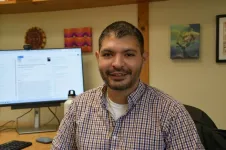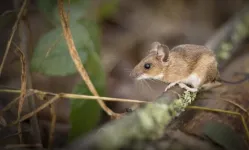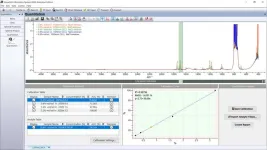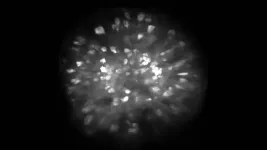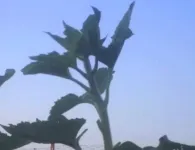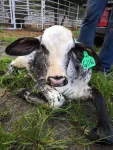(Press-News.org) Suicide and mental health distress disproportionately affect veterans in the United States. According to a report from the Substance Abuse and Mental Health Services Administration, more than 5 million veterans suffered from these adverse behavioral health issues in 2020. That same year, after adjusting for age and sex differences in the population, the U.S. Department of Veterans Affairs (VA) estimated that veterans were 57.3 percent more likely to commit suicide than non-veterans.
While the Veterans Health Administration (VHA) has put several programs in place to address the mental health needs of veterans, recent studies show that more than half of all veterans experiencing a mental health condition are not receiving timely treatment. This rate rises closer to 90 percent for veterans with a substance abuse disorder.
“This suggests that there are serious obstacles preventing veterans — especially those with the most need — from seeking and receiving mental health services. Yet it is unclear what those obstacles are,” said Sergio Ernesto Barrera, assistant professor of economics in the College of Science.
Barrera has received a two-year $300,000 Suicide Prevention and Opioid Addiction Services Research Grant from the Virginia Department of Veterans Services to lead a two-year study that addresses this knowledge gap. The team will investigate determinants of suicide and substance abuse; explore factors impacting decisions to pursue mental health and substance use treatment from both VHA non-VHA providers; evaluate the appropriateness of current treatment allocations; and seek to understand if there are individual factors such as education, income, age, military service history, and characteristics of local area of residence that may be impacting care delivery.
“There could be many reasons for why veterans are not seeking or provided care. Their closest VHA facility may be located too far away. Local VHA facilities may not have enough or any space or physicians available to provide timely treatment for veterans. As a result, veterans may believe that trying to navigate the medical system is more trouble than it’s worth,” said Barrera. “Additionally, some biases may enter the decision-making process. Some veterans may believe that they will be penalized for seeking mental health care or substance abuse treatment, and some physicians may focus exclusively on combat related mental health issues like PTSD at the expense of non-service linked depression.”
The team plans to use a variety of data sources for its analysis that includes administrative data on military service and VA benefit usage, surveys administered by the National Center of Health Statistics, as well as surveys administered to veterans inquiring about mental health status and their perceived reasons for receiving or not receiving care.
An applied micro-economist, Barrera’s experience includes performing quantitative research on underinvestment in higher education relating to institutional barriers and subjective biases among underrepresented student groups. He has also performed work examining the impact of adolescent’s exposure to military personnel on future military service and education outcomes as well as the impact of World War II service on mortality, geographic relocation, and retirement outcomes.
He served five years in the U.S. Marine Corps as a cryptologic linguist from 2008-13, which included a deployment to Afghanistan as part of Operation Enduring Freedom.
Co-principal investigators include Conor Ryan, assistant professor of economics at Pennsylvania State University; May Gianoli, assistant professor of clinical psychiatry at Yale School of Medicine and director of the Mental Health Compensation and Pension service line at VA Connecticut Healthcare System; and Andrew Meisler, clinical psychologist, VA Connecticut Healthcare System.
Martin Anthony Vargas Alvines, a Ph.D. student advised by Barrera, will also have the opportunity to work on this project.
“Our ultimate goal is to provide the Virginia Department of Veterans Services with information that allows them to design interventions that will successfully remove barriers to seeking mental health services,” said Barrera.
END
Study aims to remove barriers to veterans seeking mental health services
2023-10-31
ELSE PRESS RELEASES FROM THIS DATE:
The first ‘birder’s guide’ to meteor showers
2023-10-31
The First ‘Birder’s Guide’ to Meteor Showers
Peter Jenniskens new comprehensive guide describes over 500 meteor showers that appear in our night skies.
October 31, 2023, Mountain View, CA -- The SETI Institute is proud to announce a new book by SETI Institute meteor astronomer Dr. Peter Jenniskens. Called “Atlas of Earth’s Meteor Showers,” this comprehensive guide describes over 500 meteor showers that appear in our night skies and adds a wealth of detail to the tapestry of our solar system.
“Just as in a birder’s guide, the book describes the outward appearance, ...
Better access to diagnostic tests raises incidence of thyroid cancer in more affluent areas
2023-10-31
The incidence of thyroid cancer in São Paulo State, part of Brazil’s relatively developed Southeast region, varies considerably according to socioeconomic status (education, poverty, wealth, income, segregation, mobility, and access to resources and services) and access to screening, but is highest in higher-income areas and the state capital. Mortality rates are similar across regions and income groups, however.
These are the main findings of a study reported in the journal Endocrine Practice by researchers ...
Combining cell types may lead to improved cardiac cell therapy following heart attack
2023-10-31
Researchers at the University of Wisconsin–Madison and Academia Sinica of Taiwan have harnessed a combination of lab-grown cells to regenerate damaged heart muscle.
The study, published in Circulation — which addresses major challenges of using heart muscle cells, called cardiomyocytes, grown from stem cells — takes a crucial step toward future clinical applications.
Previous research has shown that transplanting cardiomyocytes made from induced pluripotent stem cells (iPSC) can replace muscle in the hearts of mammals. Researchers have struggled to bring the treatment to the clinic, in part because the implanted cells haven’t developed enough ...
Cary Institute to co-lead $4.8 million study on how environmental conditions shape viral outbreaks in wild rodents
2023-10-31
When, where, and why do diseases jump from animals to people? A new project will monitor how changing seasons, land use, and human behavior influence viral outbreaks in wild rodent populations, to identify hotspots with high potential for spillover into people. The project is co-led by Barbara Han, a disease ecologist at Cary Institute of Ecosystem Studies, in an international team of scientists from the Smithsonian Institution, Royal Veterinary College, Oxford University, and the University of ...
Wiley announces the release of KnowItAll 2024 with new multi-technique quantitation tool and additional advances for spectral analysis workflows
2023-10-31
Hoboken, NJ — October 31, 2023 — Wiley, a knowledge company and global leader in research, publishing and knowledge solutions, today announced the release of the KnowItAll 2024 Analytical Edition, the latest version of its spectral software that offers solutions to analyze, identify, quantify, and manage analytical and chemical data.
When it comes to chemical quantitative analysis, researchers often find themselves navigating multiple software packages. Mastering multiple software packages to achieve the same level of expertise, reproducibility, and ...
Cary Institute to co-lead $4.8M study on how environmental conditions shape RNA virus outbreaks in wild rodents
2023-10-31
When, where, and why do diseases jump from animals to people? A new project will monitor how changing seasons, land use, and human behavior influence viral outbreaks in wild rodent populations, to identify hotspots with high potential for spillover into people. The project is co-led by Barbara Han, a disease ecologist at Cary Institute of Ecosystem Studies, in an international team of scientists from the Smithsonian Institution, Royal Veterinary College, Oxford University, and the University of Glasgow.
Until now, it has been difficult to study how changing environmental conditions impact virus transmission in the wild. With $2.9 million in funding ...
For the sunflower, turning toward the sun requires multiple complex systems
2023-10-31
A sunflower’s ability to track the sun east to west during the day, and to face east again before the next sunrise, relies on multiple types of photoresponses, according to a new study publishing October 31st in the open access journal PLOS Biology by Stacey Harmer and colleagues at the University of California Davis, US. The results deepen the understanding of this well-known plant behavior, and upend previous assumptions about its dependence on a canonical light-dependent response pathway.
Because plants are ...
Smells like learning
2023-10-31
Order wine at a fancy restaurant, and the sommelier might describe its aroma as having notes of citrus, tropical fruit, or flowers. Yet, when you take a whiff, it might just smell like … wine. How can wine connoisseurs pick out such similar scents?
Cold Spring Harbor Laboratory (CSHL) Associate Professor Saket Navlakha and Salk Institute researcher Shyam Srinivasan may have the answer. They have found that certain neurons allow fruit flies and mice to tell apart distinct smells. The team ...
How sunflowers see the sun
2023-10-31
Sunflowers famously turn their faces to follow the sun as it crosses the sky. But how do sunflowers “see” the sun to follow it? New work from plant biologists at the University of California, Davis, published Oct. 31 in PLOS Biology, shows that they use a different, novel mechanism from that previously thought.
“This was a total surprise for us,” said Stacey Harmer, professor of plant biology at UC Davis and senior author on the paper.
Most plants show phototropism – the ability to grow toward a ...
Climate-smart cows could deliver 10-20x more milk in Global South
2023-10-31
URBANA, Ill. — A team of animal scientists from the University of Illinois Urbana-Champaign is set to deliver a potential game changer for subsistence farmers in Tanzania: cows that produce up to 20 times the milk of indigenous breeds.
The effort, published in Animal Frontiers, marries the milk-producing prowess of Holsteins and Jerseys with the heat, drought, and disease-resistance of Gyrs, an indigenous cattle breed common in tropical countries. Five generations of crosses result in cattle capable of ...
